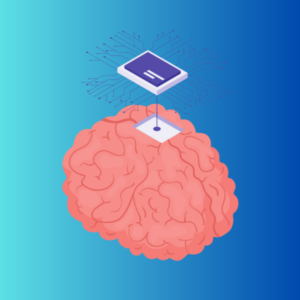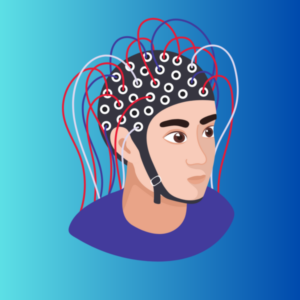Introduction
Brain-Computer Interface (BCI) technology which aims to create a direct link between the human brain and computers has been in the news this week as Synchron, an Australian medical device company, announced that it has implanted its first BCI device into the brain of a U.S. patient (in this case one with ALS, a neurodegenerative disease that affects the ability to move and speak). The company has already conducted several human clinical trials in Australia.

Synchron’s Stentrode is a minimally invasive BCI that is implanted into the brain via the blood
vessels, requiring a small incision in the neck, rather than open brain surgery. It is small, flexible and designed to record and transmit brain signals to a computer. The device has a range of potential applications, including the treatment of conditions such as paralysis, ALS, and spinal cord injuries.
Much of the press focus surrounding the announcement has been on the fact that Synchron has got a jump on Elon Musk’s Neuralink which has yet to receive approval from the Federal Drug Administration to implant its BCI technology in humans. The race in on, but whoever gets there first, this latest chapter in BCI technology represents a huge leap forward. The technology looks set to revolutionise the way we interact with machines and could lead to ground-breaking advancements in fields such as medicine, education, and entertainment.
There are two main types of BCI technology: invasive and non-invasive. Let’s look at both and at the companies that are shaping the future of this exciting technology.
Invasive Brain-Computer Interface (BCI) technology
Invasive BCIs involve the implantation of electrodes or other devices directly into the brain tissue. These devices are used to record and transmit neural signals, allowing the user to control external devices or communicate with others using their thoughts. These BCIs can provide high-fidelity recordings of neural activity and allow for precise control of external devices.  The downside is that the implantation process requires a surgical procedure, which carries risks and potential complications.
The downside is that the implantation process requires a surgical procedure, which carries risks and potential complications.
These companies are at the forefront of invasive BCI technology, and their innovative products have the potential to transform the field of neuroscience and improve the lives of patients with neurological disorders.
Neuralink founded in 2016 by Elon Musk. The company’s goal is to create a high-bandwidth, high-fidelity connection between the human brain and computers. Neuralink’s technology involves the implantation of tiny electrodes into the brain, which can then be used to read and write signals.
Blackrock Neurotech specializes in the development of implantable devices for neuroscience research and clinical applications. Its portfolio includes a range of invasive BCIs, such as Utah Arrays and Microflex Arrays, which can be used for recording and stimulating neural activity in the brain.
Synchron developed the Stentrode, a minimally invasive BCI that can be implanted into the brain via the blood vessels. The Stentrode is designed to record and transmit brain signals to a computer and has potential applications in the treatment of conditions such as paralysis and ALS.
Kernel develops invasive BCIs for use in research and healthcare. The company’s technology involves the implantation of small chips into the brain, which can then be used to read and write signals. Kernel’s technology is used in fields such as neuroscience, psychiatry, and neurology.
NeuroPace develops implantable devices for the treatment of neurological disorders such as epilepsy. Its flagship product is the RNS System, which is an implantable device that can detect and respond to abnormal brain activity in real-time.
Non-Invasive Brain-Computer Interface (BCI) technology
Non-invasive BCI technology does not require any implants and instead uses sensors placed on the scalp to detect brain activity. These BCIs provide a less accurate recording of neural activity than invasive methods, but have fewer risks and complications associated with them. They are generally less expensive and more accessible than invasive methods, making them more suitable for use in research and consumer applications.

Non-invasive BCIs include technologies such as Electroencephalography (EEG), functional Near-Infrared Spectroscopy (fNIRS), and Magnetic Resonance Imaging (MRI). These technologies can be used to detect and interpret brain activity and translate it into commands that can be used to control external devices or provide feedback to the user.
These companies are at the forefront of non-invasive BCI technology, and their innovative products have the potential to transform a range of industries, from healthcare to gaming to education. As the technology continues to advance, we can expect to see even more exciting developments in the coming years.
Emotiv BCIs are used in research, gaming, and healthcare. The company’s products include the Emotiv Insight and Emotiv Epoc, which are headsets that use sensors to measure brain activity and interpret mental commands.
NeuroSky products are used in consumer applications such as gaming and education and include the MindWave headset, which uses EEG sensors to detect brain activity and can be used to control games and other applications.
Muse produces a headband that uses EEG sensors to detect brain activity and help users with meditation and mindfulness. The device provides real-time feedback to help users train their brains to achieve a state of relaxation.
OpenBCI develops open-source, low-cost BCI platforms for research and development. The company’s products include a range of EEG and EMG sensors, as well as software and hardware tools for data analysis and visualization.
InteraXon develops BCIs for use in consumer applications such as meditation and stress management. The company’s flagship product is the Muse headband, which uses EEG sensors to detect brain activity and provide feedback to users to help them improve their mental performance.
BrainCo products are used in education and research. They include a headset that can measure brain activity and provide feedback on the user’s attention level, as well as a device that can detect and translate hand gestures into computer commands.
CTRL-Labs design BCIs for use in a range of applications, including gaming, healthcare, and productivity. The company’s technology involves the use of a wristband that can detect signals from the user’s muscles and translate them into computer commands.
In Conclusion
BCIs whether invasive or non-invasive have the potential to revolutionize the way we interact with machines. They could radically improve the quality of life for individuals with disabilities, provide new opportunities for education and entertainment, and advance our understanding of the human brain. As with any emerging technology there are, of course, potential safety, privacy, security and ethical concerns around the development of BCIs. There are risks but the potentially life-changing rewards are huge.

